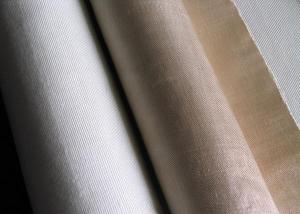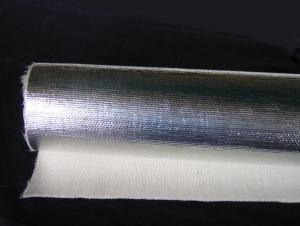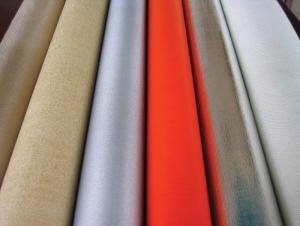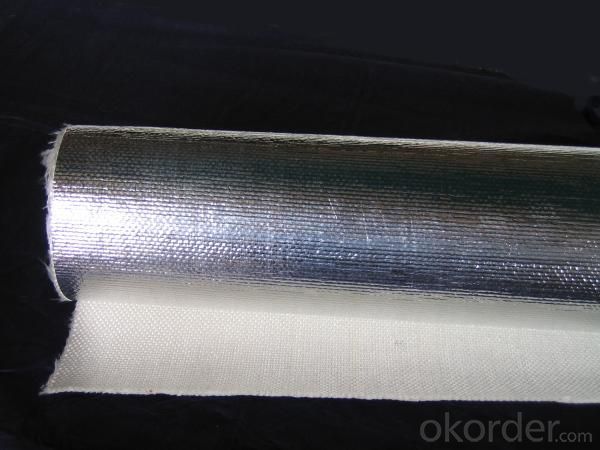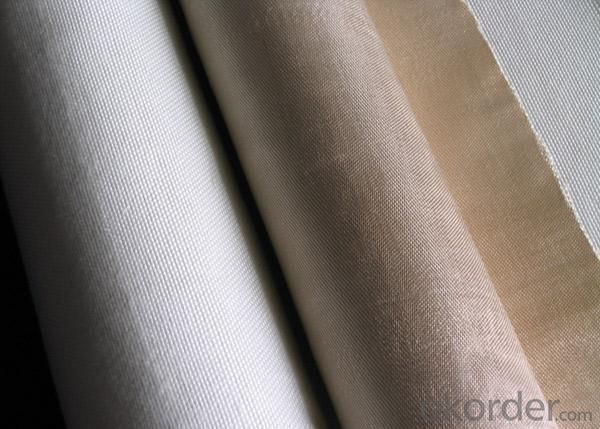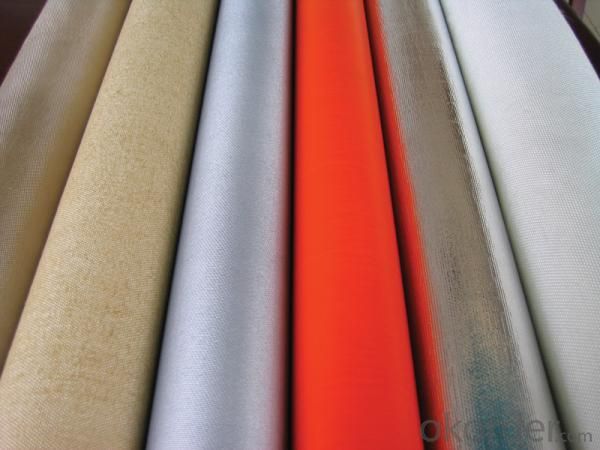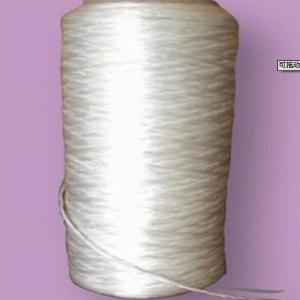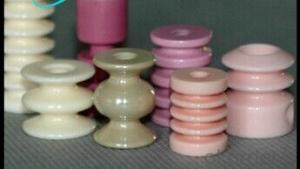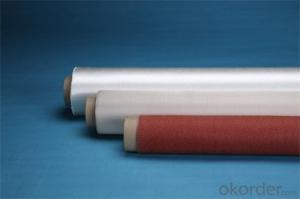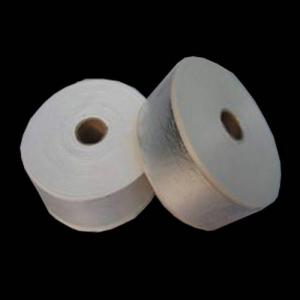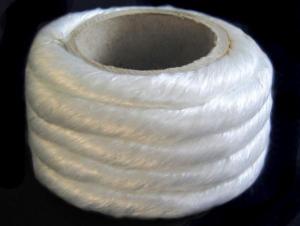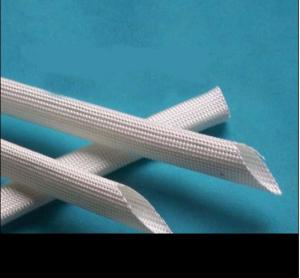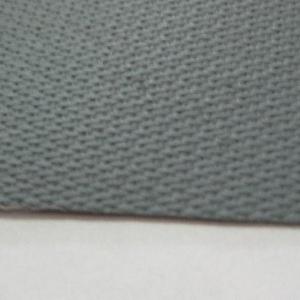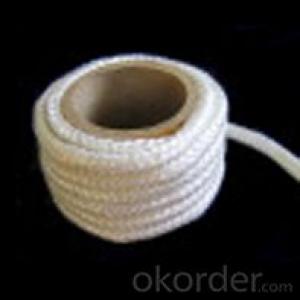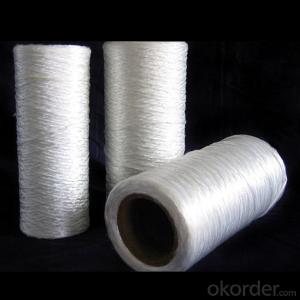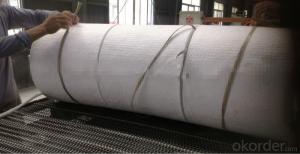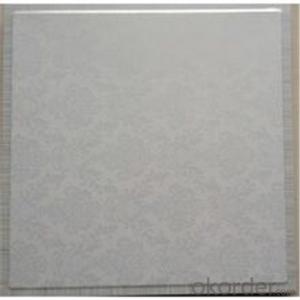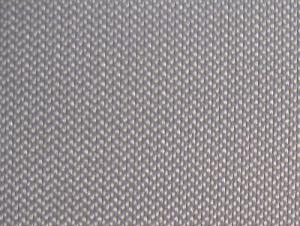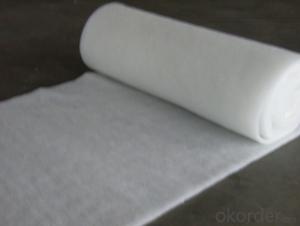Glass Fiber Textiles Textured Fiberglass Cloth
- Loading Port:
- China Main Port
- Payment Terms:
- TT or L/C
- Min Order Qty:
- 10 tons kg
- Supply Capability:
- 20*20FCL Per Month kg/month
OKorder Service Pledge
OKorder Financial Service
You Might Also Like
Specifications of Textured Fiberglass Cloth
1. Texturized fiberglass cloth 2. High temperature resistance 3. Fireproof 4. Thermal insulation
Texturized Fiberglass Cloth Description:
2. Insulating properties depend upon conductivity and radiation and these are influenced by the fabric construction.
3. It is the ideal substitue of the asbestos cloth.
4. It can resist 450-550C.
Texturized Fiberglass Cloth Application:
1. All types of thermal insulation and heat protection.
2. Welding blankets and fire curtains.
3. Expansion joints.
4. Basic cloth for coatings and laminations.
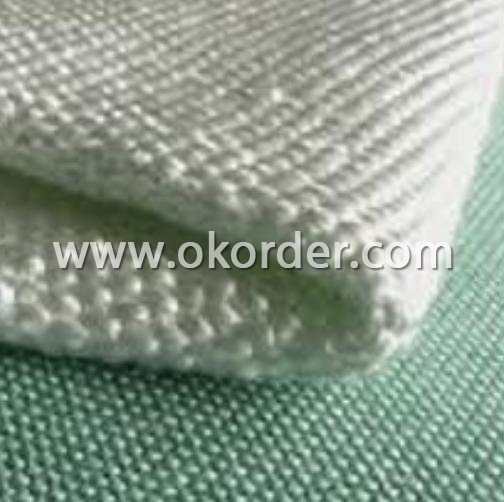
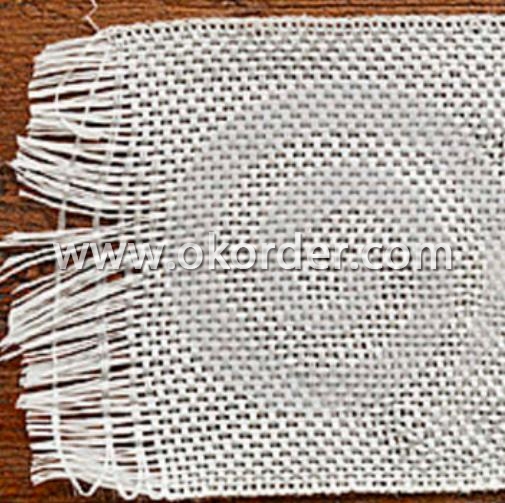
- Q: Can glass fiber textiles be used in the automotive industry?
- Yes, glass fiber textiles can be used in the automotive industry. Glass fiber textiles, commonly known as fiberglass, have several properties that make them suitable for automotive applications. Firstly, fiberglass is lightweight yet strong, which makes it ideal for components that need to be both durable and lightweight, such as car body panels and interior trim. Additionally, fiberglass has excellent thermal insulation properties, making it useful for parts that require heat resistance, like engine covers and exhaust components. Furthermore, fiberglass is resistant to corrosion, chemicals, and UV radiation, ensuring its longevity and durability in harsh automotive environments. Lastly, fiberglass can be easily molded into complex shapes, allowing for the production of intricate automotive parts. Overall, glass fiber textiles offer many advantages that make them a valuable material for use in the automotive industry.
- Q: Can glass fiber textiles be used in insulation panels?
- Insulation panels can utilize glass fiber textiles for their thermal insulation qualities. These textiles, also referred to as fiberglass textiles, are commonly employed in insulation materials due to their exceptional thermal insulation characteristics. The fibers within these textiles consist of delicate strands of glass that are interlaced or knitted together to form a textile material. This textile material can serve as a layer or core material in insulation panels, effectively providing insulation against heat transfer. Glass fiber textiles possess a low thermal conductivity, rendering them resistant to heat transfer. This particular attribute enables them to proficiently trap air and prevent heat transfer through conduction, convection, and radiation. Consequently, insulation panels incorporating glass fiber textiles can contribute to diminishing heat loss or gain, resulting in enhanced energy efficiency and thermal comfort within buildings. Moreover, glass fiber textiles possess qualities such as lightweightness, flexibility, and ease of handling, making them ideal for different insulation panel applications. They can be effortlessly cut and molded to accommodate specific requirements, simplifying the installation process. Additionally, glass fiber textiles are non-combustible, offering an added layer of safety to insulation panels. Apart from their thermal insulation properties, glass fiber textiles also offer additional benefits. They exhibit resistance to moisture, mold, and mildew, making them suitable for usage in damp or humid environments. They are also resistant to chemicals and boast excellent durability, ensuring long-lasting performance. Overall, glass fiber textiles are a popular and effective material choice for insulation panels. Their remarkable thermal insulation properties, coupled with their versatility and durability, make them an apt selection for a wide array of applications, including residential, commercial, and industrial buildings.
- Q: How do glass fiber textiles compare to natural fibers in terms of sustainability?
- Glass fiber textiles and natural fibers exhibit notable differences in sustainability. Whereas natural fibers, like cotton or hemp, derive from renewable resources, glass fiber textiles are produced using non-renewable materials such as sand and limestone. The extraction and processing of these raw materials for glass fibers impose significant environmental consequences, such as energy consumption and greenhouse gas emissions. Moreover, the manufacturing of glass fiber textiles necessitates substantial amounts of energy and water, thereby exacerbating their environmental footprint. Conversely, natural fibers can be cultivated with minimal water and energy inputs, often benefiting local agricultural communities and reducing reliance on synthetic materials. Furthermore, glass fiber textiles lack biodegradability, leading to their persistence in the environment for extended periods and contributing to waste accumulation and potential pollution. In contrast, natural fibers, being organic in nature, typically biodegrade naturally over time, thereby minimizing their impact on landfills and ecosystems. However, it is worth noting that the sustainability of glass fiber textiles can be enhanced through recycling and the adoption of more energy-efficient manufacturing processes. By recycling glass fibers, the demand for virgin materials can be reduced, consequently lowering environmental impacts. Additionally, advancements in technology and production methods can aid in diminishing the energy and water consumption associated with glass fiber production. In conclusion, while glass fiber textiles possess certain advantages such as strength and durability, they generally yield a higher environmental impact in terms of sustainability compared to natural fibers. Conversely, natural fibers are renewable, biodegradable, and require fewer resources for production. Nonetheless, improvements in manufacturing practices and recycling endeavors can augment the sustainability of glass fiber textiles, thereby rendering them a more environmentally friendly option in the future.
- Q: Can glass fiber textiles be used in sports equipment?
- Sports equipment can indeed utilize glass fiber textiles. These textiles consist of glass fibers that are either woven or non-woven. The fibers are renowned for their impressive strength-to-weight ratio and their remarkable resistance to heat and chemicals. These qualities make them an excellent choice for numerous applications within the sports industry. One common application of glass fiber textiles in sports equipment is in the production of composite materials. Manufacturers achieve this by saturating the glass fiber textiles with a resin, such as epoxy, carbon fiber, or polyester. This process results in the creation of lightweight and robust materials that possess enhanced strength and rigidity. These composites are then employed in the manufacturing of sports equipment like tennis rackets, hockey sticks, and bicycle frames. Another way in which glass fiber textiles are utilized in sports equipment is for reinforcement purposes. They can be incorporated into the construction of helmets, body armor, and protective gear to improve their ability to withstand impacts and enhance overall durability. Moreover, glass fiber textiles can act as a foundational material for sports apparel. This allows for moisture-wicking properties and aids in regulating body temperature during physical activities. In summary, glass fiber textiles offer a host of advantages that render them suitable for use in sports equipment. Their exceptional strength, lightweight nature, and resistance to heat and chemicals make them ideal for creating durable and robust composites, as well as reinforcing protective gear. Their versatility and performance play a vital role in elevating the performance and safety of sports equipment.
- Q: How does glass fiber textile perform in terms of stain resistance?
- Glass fiber textile is known for its excellent stain resistance. The properties of glass fibers make it highly resistant to common stains such as oil, grease, and dirt. Unlike natural fibers like cotton or wool that can absorb liquids and stains, glass fibers are non-absorbent, making it easier to clean and maintain. The smooth and non-porous surface of glass fibers also prevents stains from penetrating deep into the fabric, allowing for quick and easy removal. This stain resistance characteristic makes glass fiber textile a popular choice for applications where cleanliness and hygiene are important, such as in healthcare facilities, food processing industries, and outdoor furniture.
- Q: Can glass fiber textiles be fire-resistant?
- Yes, glass fiber textiles can be fire-resistant. Glass fibers are made from molten glass that is drawn into thin strands. These strands are then woven into textiles, which can be treated with fire-resistant coatings or additives to enhance their fire resistance properties. The glass fibers themselves have a high melting point, typically around 1400 to 1600 degrees Celsius, which makes them naturally fire-resistant. Additionally, the structure of glass fibers allows for low thermal conductivity, meaning they do not readily transfer heat, further enhancing their fire resistance. Overall, glass fiber textiles can provide excellent fire resistance properties, making them suitable for various applications where fire safety is a concern, such as in protective clothing, curtains, and insulation materials.
- Q: Can glass fiber textiles be used in reinforcement of carbon fibers?
- Hybrid composites, which consist of glass fiber textiles and carbon fibers, are commonly used for reinforcement purposes. The utilization of glass fiber textiles alongside carbon fibers can yield numerous benefits. First and foremost, glass fibers are a cost-effective alternative to carbon fibers, as they are relatively inexpensive. This affordability makes glass fibers a viable choice in applications where cost plays a significant role. Moreover, glass fibers possess exceptional mechanical properties, including high tensile strength and stiffness. By combining them with carbon fibers, the resulting hybrid composite exhibits enhanced mechanical properties compared to utilizing carbon fibers alone. This, in turn, leads to improved structural integrity and performance in a variety of applications. Furthermore, glass fiber textiles contribute to the impact resistance and fracture toughness of the composite. With their greater resistance to impact, glass fibers aid in preventing delamination or cracking in the carbon fiber matrix. Nevertheless, it is crucial to consider the specific requirements of each application when choosing reinforcement materials. While glass fibers offer certain advantages, they have lower specific strength and stiffness in comparison to carbon fibers. In cases where weight reduction is of utmost importance, utilizing carbon fibers alone or in combination with other high-performance fibers may be more suitable. To summarize, glass fiber textiles can indeed be utilized for reinforcing carbon fibers, resulting in a cost-effective solution with improved mechanical properties and impact resistance.
- Q: Can glass fiber textile be used in electronics?
- Yes, glass fiber textile can be used in electronics. It is commonly used as a reinforcement material in printed circuit boards (PCBs) to provide mechanical strength and insulation. Additionally, it is also used in the manufacturing of electrical cables and connectors to enhance their durability and conductivity.
- Q: How do glass fiber textiles affect the moisture absorption or release of fabrics?
- Glass fiber textiles have a minimal effect on the moisture absorption or release of fabrics. Due to their low absorbency and moisture-wicking properties, they can help to enhance the breathability and moisture management of fabrics.
- Q: Exterior wall glass fiber cloth for thermal insulation, usually E yarn or G wire?For single glass fiber weaving with the beam is how screwed together, what is the original silk glue stuck together? Or do you twist the raw silk together at high temperatures?Hope expert pointing, thank you!
- You can use epoxy adhesive
1. Manufacturer Overview
| Location | Beijing, China |
| Year Established | 1992 |
| Annual Output Value | Above US$ 3 Million |
| Main Markets | North America;Southeast Asia ;Western Europe ;Middle East |
| Company Certifications | ISO 9001:2008 |
2. Manufacturer Certificates
| a) Certification Name | |
| Range | |
| Reference | |
| Validity Period |
3. Manufacturer Capability
| a) Trade Capacity | |
| Nearest Port | Tianjing |
| Export Percentage | 60% - 70% |
| No.of Employees in Trade Department | 21-50 People |
| Language Spoken: | English; Chinese |
| b) Factory Information | |
| Factory Size: | Above 10,000 square meters |
| No. of Production Lines | Above 8 |
| Contract Manufacturing | |
| Product Price Range | High; Average |
Send your message to us
Glass Fiber Textiles Textured Fiberglass Cloth
- Loading Port:
- China Main Port
- Payment Terms:
- TT or L/C
- Min Order Qty:
- 10 tons kg
- Supply Capability:
- 20*20FCL Per Month kg/month
OKorder Service Pledge
OKorder Financial Service
Similar products
Hot products
Hot Searches
Related keywords
